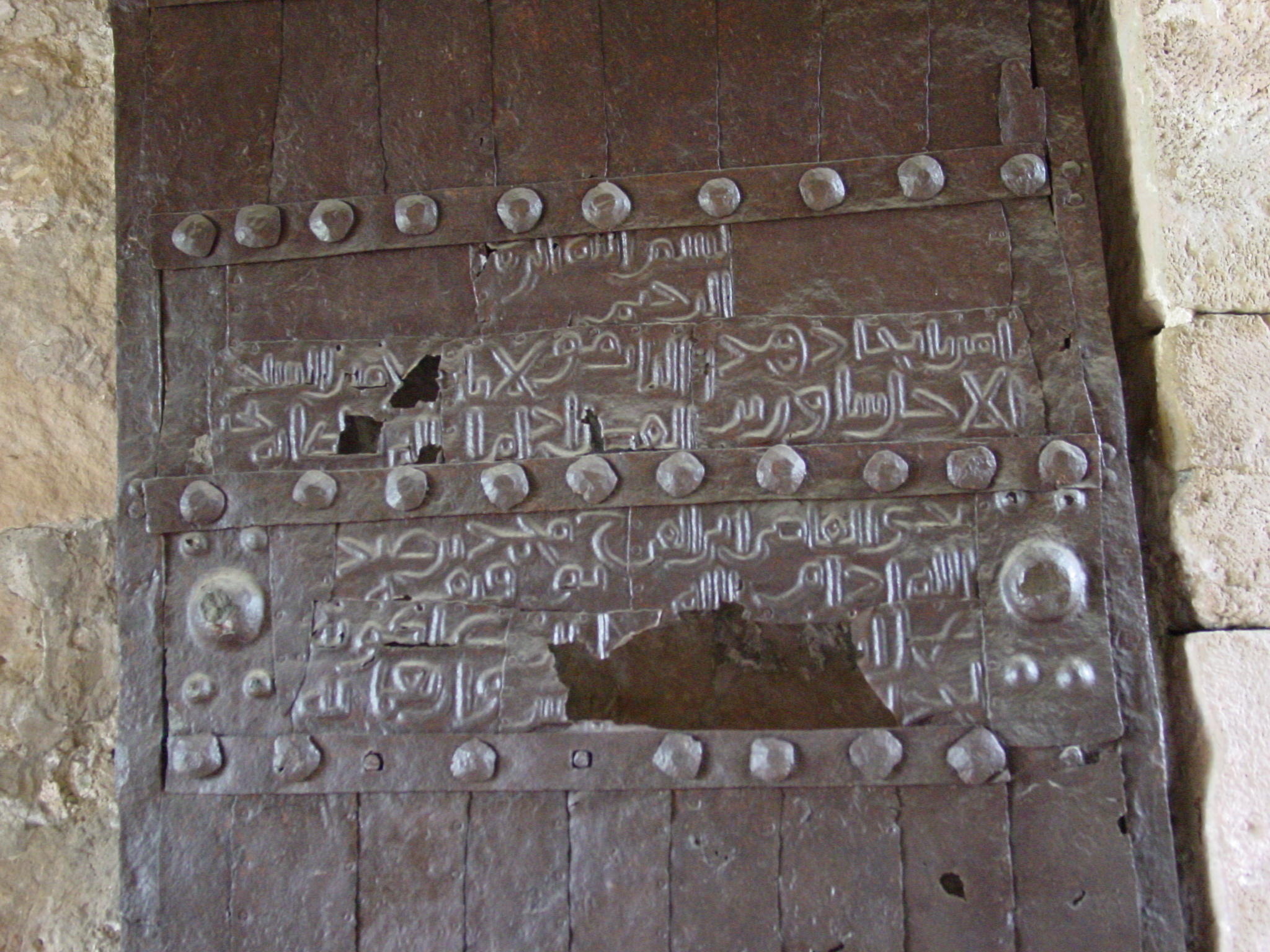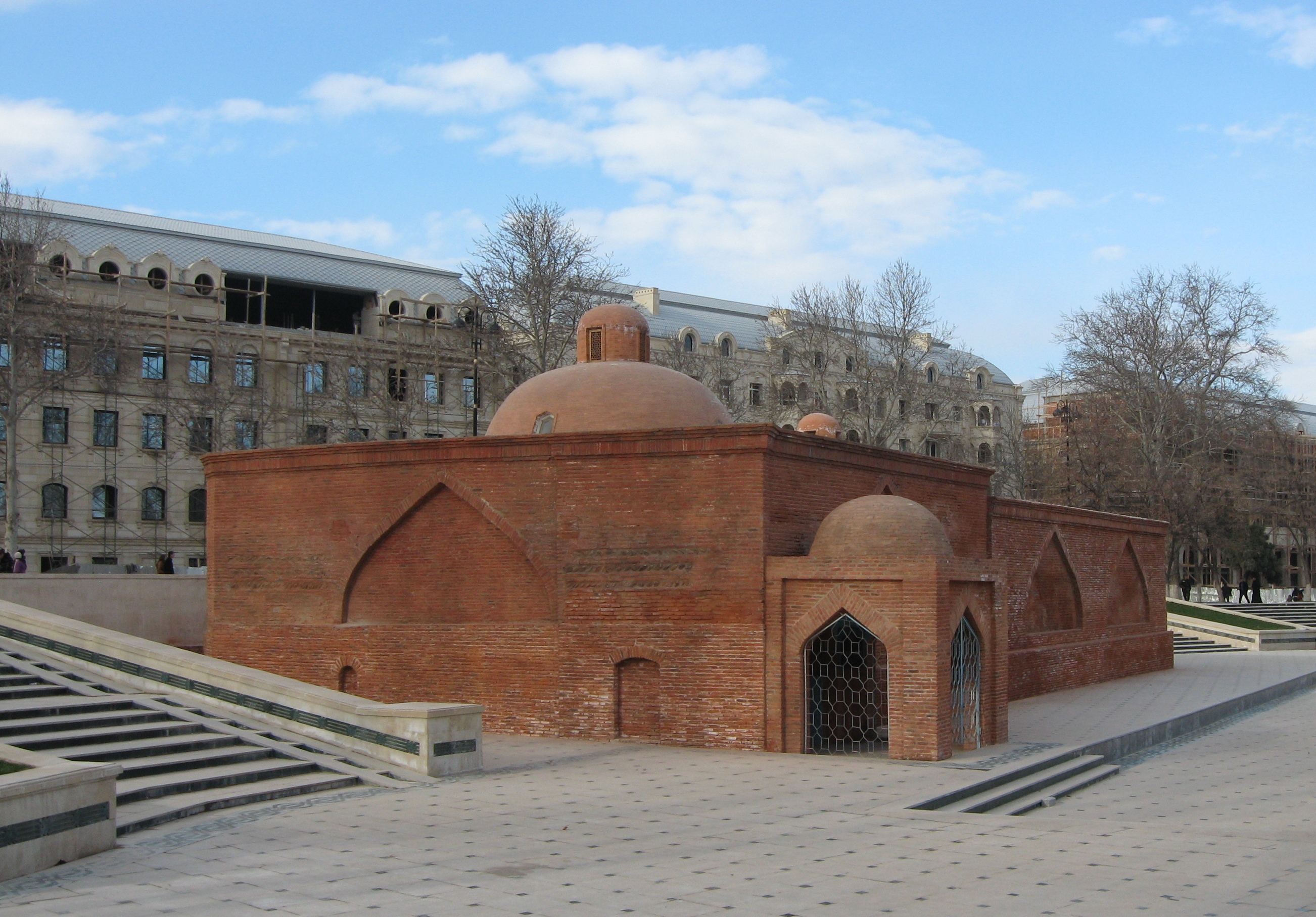|
Chokak Hamam
Chokak Hamam ( az, Çökək hamam, "fallen bath") is a historical bath near Juma Mosque in Ganja. About Chokak Hamam was built in Ganja in 1606 under a project of architect Bahāʾ al-dīn al-ʿĀmilī (also known as Sheikh Baha'i). Clay and lime mix and red bricks were used in the construction of the building. It has a large and two small domes. In 2003 it was repaired by the Repair Department of the Ministry of Culture. The building is a decorative art center. Since 2014, the bathhouse operates as a bath for one of the hotels in Ganja. Gallery File:Chokak Bath and Javad khans tomb.JPG, Chokak Bath and Javad khan's tomb File:Qədim Gəncəmım mədəni irsi.jpg File:Chokak hamam Ganja1.jpg File:Chokak hamam Ganja2.jpg See also * Juma Mosque * Tomb of Javad khan Javad Khan's tomb is in Ganja, Shah Abbas Square, near the Shah Abbas Mosque. History At the time of the USSR, during excavations, the excavator was accidentally involved in the construction of a fountain in ... [...More Info...] [...Related Items...] OR: [Wikipedia] [Google] [Baidu] |
Ganja, Azerbaijan
Ganja (; az, Gəncə ) is Azerbaijan's third largest city, with a population of around 335,600.Azərbaycan Respublikası. — 2. Azərbaycan Respublikasının iqtisadi və inzibati rayonları. — 2.4. Azərbaycan Respublikasının iqtisadi və inzibati rayonlarının ərazisi, əhalisinin sayı və sıxlığı, səhifə 66. /Azərbaycanın əhalisi (statistik bülleten) Müəllifi: State Statistics Committee, Azərbaycan Respublikasının Dövlət Statistika Komitəsi. Buraxılışa məsul şəxs: Rza Allahverdiyev. Bakı — 2015, 134 səhifə. The city has been a historic and cultural center throughout most of its existence. It was the capital of the Ganja Khanate until 1804; after Qajar Iran ceded it to the Russian Empire following the Treaty of Gulistan in 1813, it became part of the administrative divisions of the Georgia Governorate, Georgia-Imeretia Governorate, Tiflis Governorate, and Elizavetpol Governorate. Following the dissolution of the Russian Empire and the Transc ... [...More Info...] [...Related Items...] OR: [Wikipedia] [Google] [Baidu] |
Juma Mosque, Ganja
Juma Mosque of Ganja ( az, Cümə məscidi) or Friday Mosque of Ganja is a mosque located in the centre of Ganja, Azerbaijan. The mosque was built in 1606, according to a project of Sheykh Baheddin Mohammad Amili. The mosque is also often called “Shah Abbas Mosque” ( az, Şah Abbas Məscidi) because it was built on the instructions of Shah Abbas the Great during his reign. In 1776, two minarets were attached to the mosque. The mosque was built of red brick, which was traditional for Ganja. There was functioned a madrasah at the mosque for a long time, where the eminent Azerbaijani poet and scientist Mirza Shafi Vazeh taught at that time. In 2008, the building of the mosque was totally reconstructed. Old Russian bonds put into an envelope had been found during the reconstruction. This finding helped to draw out a conclusion that the last construction works had been held in 1910, but not in the end of the 18th century, during the Javad Khan’s reign, as it was considered ea ... [...More Info...] [...Related Items...] OR: [Wikipedia] [Google] [Baidu] |
Bahāʾ Al-dīn Al-ʿĀmilī
Bahāʾ al‐Dīn Muḥammad ibn Ḥusayn al‐ʿĀmilī (also known as Sheikh Baha'i, fa, شیخ بهایی) (18 February 1547 – 1 September 1621) was an Iranian ArabEncyclopedia of Arabic Literature'. Taylor & Francis; 1998. . p. 85. Shia Islamic scholar, philosopher, architect, mathematician, astronomer, and poet who lived in the late 16th and early 17th centuries in Safavid Iran. He was born in Baalbek, Ottoman Syria (present-day Lebanon) but immigrated in his childhood to Safavid Iran with the rest of his family. He was one of the earliest astronomers in the Islamic world to suggest the possibility of the Earth's movement prior to the spread of the Copernican theory. He is considered one of the main co-founders of Isfahan School of Islamic Philosophy. In later years he became one of the teachers of Mulla Sadra. He wrote over 100 treatises and books in different topics, in Arabic and Persian. A number of architectural and engineering designs are attributed to him ... [...More Info...] [...Related Items...] OR: [Wikipedia] [Google] [Baidu] |
Ministry Of Culture (Azerbaijan)
The Ministry of Culture of Azerbaijan Republic ( az, Azərbaycan Respublikasının Mədəniyyət Nazirliyi) is a governmental agency within the Cabinet of Azerbaijan in charge of regulation of the activities and promotion of Azerbaijani culture. The ministry is headed by Anar Karimov. General information The ministry which is located in the capital of the country- Baku is funded mainly from the state budget. The Statute of the Ministry approved by the President determines the main directions, tasks, rights and organization of activity of this state body. The institutions under the Ministry of Culture and Tourism of Azerbaijan include 28 theaters, 6308 historical and cultural monuments, 1 circus and 12 concert centers, 3985 libraries, 2708 clubs, 189 museums (with branches), 234 children's music schools, art and painting schools, 33 art galleries and exhibition hall, 21 state reserves, 60 cultural and leisure parks, 1 Zoo, a Scientific and Methodological Center for Culture, 4 Le ... [...More Info...] [...Related Items...] OR: [Wikipedia] [Google] [Baidu] |
Tomb Of Javad Khan
Javad Khan's tomb is in Ganja, Shah Abbas Square, near the Shah Abbas Mosque. History At the time of the USSR, during excavations, the excavator was accidentally involved in the construction of a fountain in the courtyard of the mosque, and excavations were stopped. The grave and gravestone which something had been written on them in Arabic were found. The reading of the articles shows that the grave belongs to the martyr khan of Ganja Ganja (, ; ) is one of the oldest and most commonly used synonyms for marijuana. Its usage in English dates to before 1689. Etymology ''Ganja'' is borrowed from Hindi/Urdu ( hi, गांजा, links=no, ur, , links=no, IPA: �aːɲd� ...- Javad Khan and the graveyard is restored regardless of the protests and obstacles of the center. Finally, in 2005, thanks to the support of the Heydar Aliyev Foundation, the tomb is being erected on the grave, and the memory of Javad Khan is perpetuated. The mausoleum is constructed in a quadra ... [...More Info...] [...Related Items...] OR: [Wikipedia] [Google] [Baidu] |
Tourist Attractions In Ganja
Ganja, a popular tourist destination in Azerbaijan is the second largest city of the country. The city is located 400–450 meters above the sea level, lies on the Ganja-Gazakh plain in the Kur-Araz lowland in the west of Azerbaijan, 375 km away from Baku. It is situated at the north-eastern foothills of the Lesser Caucasus mountain ranges on the Ganjachay river. Ganja offers a variety of tourist attractions, including its nature, historical sights, monuments, museums, theaters and other places. Historic buildings Mausoleums Museums Parks and gardens Religious places Cultural buildings Squares Shopping Nature Others Places nearby See also * Ganja, Azerbaijan * Hajikend, Ganja References External links {{Wikivoyage, Ganja Official website of Executive Power of GanjaOfficial website of Ganja city Tourism in Azerbaijan Tourist attractions in Ganja, Azerbaijan Ganja Ganja Ganja (, ; ) is one of the oldest and most ... [...More Info...] [...Related Items...] OR: [Wikipedia] [Google] [Baidu] |
Bathrooms
A bathroom or washroom is a room, typically in a home or other residential building, that contains either a bathtub or a shower (or both). The inclusion of a wash basin is common. In some parts of the world e.g. India, a toilet is typically included in the bathroom; in others, the toilet is typically given a dedicated room separate from the one allocated for personal hygiene activities. In North American English the word 'bathroom' is sometimes used to refer to any room in a residence that contains a toilet, regardless of the inclusion of a bath or shower. Historically, bathing was often a collective activity, which took place in public baths. In some countries the shared social aspect of cleansing the body is still important, as for example with '' sento'' in Japan and the "Turkish bath" (also known by other names) throughout the Islamic world. Variations and terminology The term for the place used to clean the body varies around the English-speaking world, as does the ... [...More Info...] [...Related Items...] OR: [Wikipedia] [Google] [Baidu] |
History Of Ganja, Azerbaijan
History (derived ) is the systematic study and the documentation of the human activity. The time period of event before the invention of writing systems is considered prehistory. "History" is an umbrella term comprising past events as well as the memory, discovery, collection, organization, presentation, and interpretation of these events. Historians seek knowledge of the past using historical sources such as written documents, oral accounts, art and material artifacts, and ecological markers. History is not complete and still has debatable mysteries. History is also an academic discipline which uses narrative to describe, examine, question, and analyze past events, and investigate their patterns of cause and effect. Historians often debate which narrative best explains an event, as well as the significance of different causes and effects. Historians also debate the nature of history as an end in itself, as well as its usefulness to give perspective on the problems of the p ... [...More Info...] [...Related Items...] OR: [Wikipedia] [Google] [Baidu] |
Buildings And Structures In Ganja, Azerbaijan
A building, or edifice, is an enclosed structure with a roof and walls standing more or less permanently in one place, such as a house or factory (although there's also portable buildings). Buildings come in a variety of sizes, shapes, and functions, and have been adapted throughout history for a wide number of factors, from building materials available, to weather conditions, land prices, ground conditions, specific uses, prestige, and aesthetic reasons. To better understand the term ''building'' compare the list of nonbuilding structures. Buildings serve several societal needs – primarily as shelter from weather, security, living space, privacy, to store belongings, and to comfortably live and work. A building as a shelter represents a physical division of the human habitat (a place of comfort and safety) and the ''outside'' (a place that at times may be harsh and harmful). Ever since the first cave paintings, buildings have also become objects or canvasses of much artistic ... [...More Info...] [...Related Items...] OR: [Wikipedia] [Google] [Baidu] |
Safavid Architecture
Safavid Iran or Safavid Persia (), also referred to as the Safavid Empire, '. was one of the greatest Iranian empires after the 7th-century Muslim conquest of Persia, which was ruled from 1501 to 1736 by the Safavid dynasty. It is often considered the beginning of modern Iranian history, as well as one of the gunpowder empires. The Safavid Shāh Ismā'īl I established the Twelver denomination of Shīʿa Islam as the official religion of the empire, marking one of the most important turning points in the history of Islam. An Iranian dynasty rooted in the Sufi Safavid order founded by Kurdish sheikhs, it heavily intermarried with Turkoman, Georgian, Circassian, and Pontic GreekAnthony Bryer. "Greeks and Türkmens: The Pontic Exception", ''Dumbarton Oaks Papers, Vol. 29'' (1975), Appendix II "Genealogy of the Muslim Marriages of the Princesses of Trebizond" dignitaries and was Turkish-speaking and Turkified. From their base in Ardabil, the Safavids established control over ... [...More Info...] [...Related Items...] OR: [Wikipedia] [Google] [Baidu] |



.jpg)
